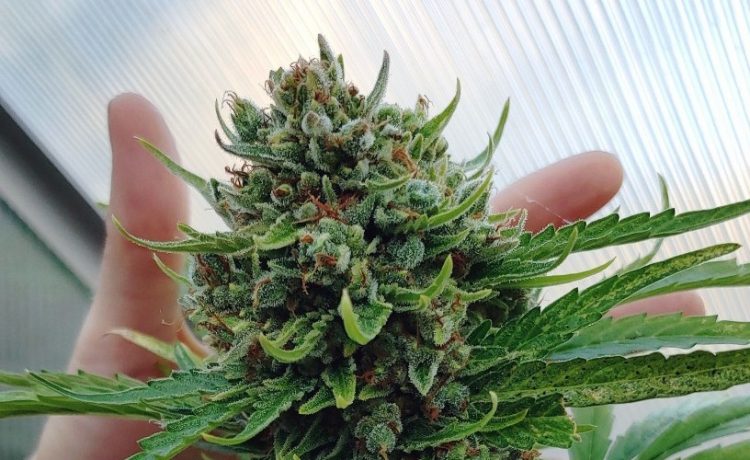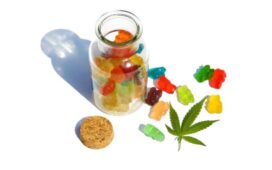Growing cannabis is an exciting adventure. With its fair share of hard work and nuances to be taken care of, any grower would be impatient to savor the fruits of labor at harvest time.
If you are a newbie in this journey, I understand how time feels stretched till the moment arrives. I remember the excitement that coursed through my veins when my first batch of buds was harvest-ready, finally.
So, without any ado, let me take you through everything you need to know about harvesting cannabis.
From the correct harvesting time to the signs that tell your plant babies are ready to harvest, here is a complete beginner’s guide for marijuana harvest.
Average Time Needed From Planting To Harvest
From a tiny seedling to a mature, luscious, aromatic plant ready to flower, Marijuana plants have a broad range of growth periods. Each growth cycle has a different duration. These timings also depend on multiple factors like the cannabis strain, growing medium, and nutrition.
Usually, it takes from 6 weeks to 16 weeks for most plants to get harvest-ready. Most growers share that their plants need 9 to 12 weeks to get to harvesting from planting. But as I already said, several factors influence this timing.
However, if you want to reduce the flowering time considerably, let me tell you about three autoflowering strains that are my favorite. They produce delicious buds, grow faster, and are super easy to take care of.
1. White Widow
This super resilient cultivar is the perfect strain for a new cannabis grower. Expect thick foliage and favorable harvest within six to eight weeks when growing this one. These girls with a rapid maturation rate are also resistant to problems like mildew and mold.
2. Raisin-berry
Growing sturdy and robust plants from this cultivar is almost effortless. They produce harvest-ready buds in about ten weeks and release an enticing earthy aroma while flowering.
3. Blue Amnesia
In about ten weeks, this one produces potent, delicious, allrounder weed with a berry-sweet and floral aroma. Cultivating this variety is a cakewalk for both the veterans and the new grower.
Homegrown Cannabis co is my go-to online cannabis seed seller for top-class fast germinating seeds with stable genetics.
In the initial days of growing, I regretted harvesting the plants too early rather than harvesting too late. But you don’t need to worry. I will give you a low down on the signs you need to be on the lookout for to nail the perfect harvest time.
Signs that say that it’s too early to harvest.
Trichomes are the most crucial indicators that signal the harvesting time of your crop. Know that you have some more time before harvesting if the majority of the trichomes are clear. Clear trichomes indicate that resin production has not reached its prime, and thus the buds produced will not be as potent, flavorful, and aromatic as they are supposed to be.
4. Common Signs Of A Harvest-Ready Plant
Rejoice when you notice a slightly amber hue in your plant’s trichomes. If the trichomes are primarily cloudy than a mix of cloudy and clear, be certain that it is time.
Let me now share some more visual cues of a harvest-ready marijuana plant.
· Trichome color: The appearance of trichomes, the small resin beads on the marijuana flowers, is the surest sign that the plant is about to be ready for harvest. Trichome color is the most reliable marker of the harvest time. Ideally, the resin turns milky white with an amber hue in a harvest-ready bud. You need a magnifying glass to observe this as they are not visible to the naked eye.
· Brown Pistils: You need to bring out the magnifying glass for this one as well. The pistils of the marijuana plants begin to turn brown upon maturity. When almost half the pistils are brown, it is the optimal time for harvesting.
· Leaf Color: Changing the hues of the fan leaves is another dependable marker of the harvest time. Nitrogen provides the leaves with green color in the flowering stages. With the harvest time setting in, nitrogen reduces, turning the leaves yellow. The leaves also fall off.
· Curling Leaves: In addition to turning yellow, the fan leaves also get curled. The cannabis plants start taking less water as the harvest time draws near and the leaf starts drying up.
· Bud Shape: When you notice tightly packed firm buds on your plants, be rest assured that the plant is ripe enough. This marker is not as dependable as the trichome test, yet the bud shape is observable with naked eyes, but it does speak about the maturity of the plant.
I like to bring out my magnifying glass only after the buds start getting tighter and firmer.
Signs That Say, “Boo! You Are Too Late.”
I believe harvesting cannabis past its prime is better than harvesting them prematurely.
Though the scent and flavor start to fade, the terpenes containing healing properties are said to become more potent when harvested late.
If you notice that most of the trichomes have turned amber, the buds are overripe. The harvested weed will have an unpleasant taste when most trichomes become amber from milky white. THC also begins to degrade at this stage. They can also turn black if left for more days. Trichomes also tend to get brittle and crumble in your fingers if they are overripe.
Harvesting Method
I love early mornings for harvesting the buds. If you are growing autoflower plants, you can chop the entire plant at once. However, sometimes it’s better to harvest the marijuana plant in sections.
I have noticed that the buds on the topmost branches ripen faster. In that case, cut the main stalk to about halfway up so that only the upper portion of the plant is removed.
You can also snip off individual branches in the upper section. This will allow the sun to reach the lower stems, providing the buds with more time to grow fatter for another week.
Harvesting the plant in sections allows me to divide the time, effort, and space required for drying and curing. If I am harvesting large batches, harvesting in sections makes the later steps more manageable.
If you are harvesting portion by portion, use a small hand saw to cut the lower stem. As I practice a recycled organic living soil method, I let the root remain inside the container or the grow bag. The root ball then decomposes, feeds the worms, and fertilizes the soil until the next growing season arrives.
Steps After Harvest
Only harvesting well is not enough. You need to dry, trim and cure the buds to make your weed ready to be enjoyed. You can also store them for future use.
For lasting freshness and maximum shelf life, use a vacuum-sealed container and keep it in a cool, dark place. Stored well, your buds will remain tasty, potent, and fresh for up to a year.
Some more words of wisdom before we end. Some autoflower plants might not give out these signs clearly. They might not lose their leaves, or their trichomes might not turn cloudy or amber evenly.
In such cases, simply go with your gut and harvest them when you feel they are ready. You can also check out the pack of seeds and ascertain the harvest time as stated by the breeder. Most strains ripen within 10 to 12 weeks.
I like to harvest when the buds are swollen and ripe, and some of the trichomes look cloudy for about a week in the absence of clear signs.
I hope you found this article informative, interesting, and useful. If you do, please share it with your grower friends. Here’s wishing you a bountiful harvest, mi amigo!

















